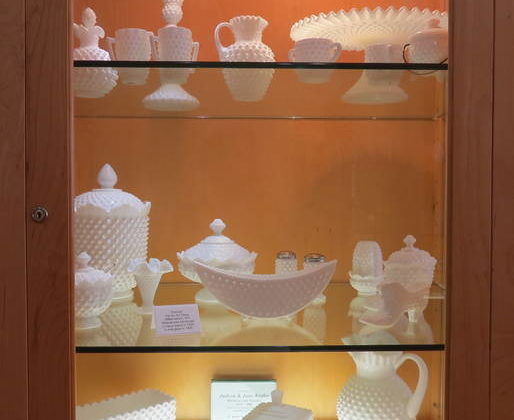
Ohio Glass Museum features museum, studio
Story by Sarah Allen
Photos courtesy of Ohio Glass Museum

Story by Sarah Allen
Photos courtesy of Ohio Glass Museum
The past can be a delicate thing — and nowhere is that more true than at the Ohio Glass Museum.
The museum was originally created when the area’s visitors bureau was looking for a new attraction in Lancaster. The final decision: a glass museum.
Museum director Bill Eckman said the decision was reached due to the “importance of glass-working in this area and the region.”
Eckman described a typical visit to the museum, which begins with a 15-minute film about the history of glass-making. “It’s very informative,” he said.
Following the film, Eckman said guests can explore several touring areas. In the primary area, he said, the museum “changes out the major exhibit every six months.” That exhibit will feature glasswork within a certain theme, with pieces coming from both the museum’s archives as well as from glassworkers in the community. Currently, the museum has about 5,000 pieces in its archives.
The current theme, according to the museum’s website, is all about pressed glass. The website also lists past exhibit themes, which include: “Cranberry Glass,” “Iridescence in Essence” (carnival glass), and “Got Milk Glass and Bottles.”
Other exhibits include a history room, which showcases periods of glassmaking throughout time, as well as a “Treasures of Ohio” room. Eckman said that the museum’s building used to be a bank, and that the Ohio room is actually in a walk-in vault.
Other exhibit areas include one that highlights Anchor Hocking and Lancaster Glass Company, and another that focuses on the high volume manufacture of glass.
And while these exhibits allow guests to better understand the history and intricacy of glass-making, a favorite stop at the Ohio Glass Museum is its studio.
There, guests can see a glass-blowing demonstration.
“It’s a very attractive thing for people to see,” Eckman said. The reaction, he added, is always positive.
The process, he added, “is very verbally explained.”
In addition, guests have the opportunity to purchase the piece that they just saw being made. And, if not that particular item, the gift shop includes a multitude of other pieces that were made there in the studio.
The museum also offers classes, which require sign-ups. The website details various class themes, such as making ornaments, beads and paper weights.
ID, 'source', true); $sourcelink = get_post_meta($post->ID, 'sourcelink', true); $sourcestring = '' . __('SOURCE','gabfire') . ''; if ($sourcelink != '') { echo "
$sourcestring: $source
"; } elseif ($source != '') { echo "$sourcestring: $source
"; } // Display pagination $args = array( 'before' => '' . __('Pages:','gabfire'), 'after' => '
', 'link_before' => '', 'link_after' => '', 'next_or_number' => 'number', 'nextpagelink' => __('Next page', 'gabfire'), 'previouspagelink' => __('Previous page', 'gabfire'), 'pagelink' => '%', 'echo' => 1 ); wp_link_pages($args); // Display edit post link to site admin edit_post_link(__('Edit','gabfire'),'','
'); // Post Widget gab_dynamic_sidebar('PostWidget'); ?>